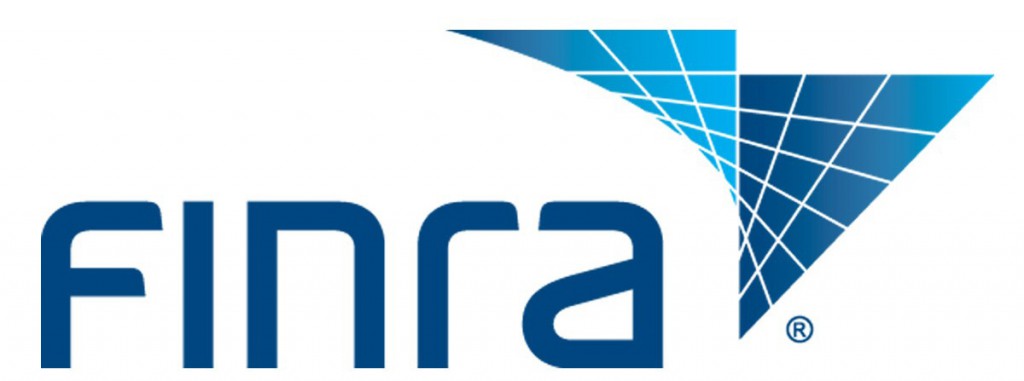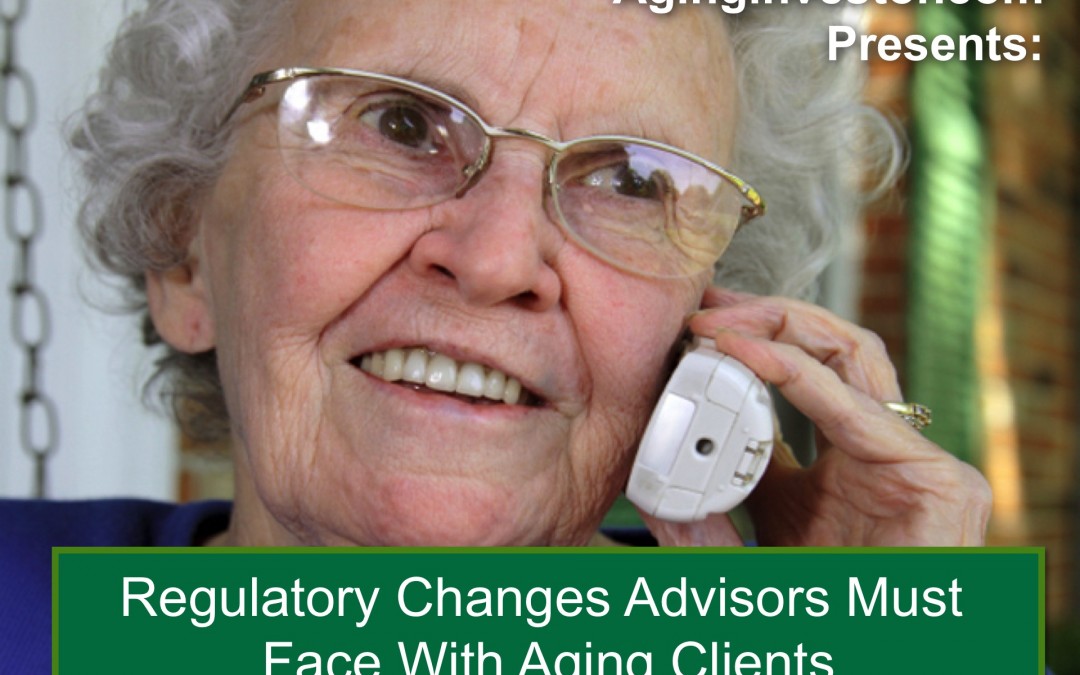


Two Things Professionals Can Do About Elder Financial Abuse
Two Things Professionals Can Do About Elder Financial Abuse
It’s vicious and pervasive. It’s growing. It has been called “the crime of the century”. Elder financial abuse, according to a study by True Link Financial, costs seniors in the U.S. over $36B a year. But can financial professionals do anything about it? We say definitely yes.
Most of us have encountered this kind of opportunistic crime at some point, among family, neighbors or friends. When we at AgingInvestor.com present to groups of professionals we ask how many have had witnessed this kind of abuse with anyone known to them. Almost every hand goes up. The question is, what can you do about it?
Many professionals are either hesitant to get involved because they think privacy concerns should stop them, or they want to take action but are unsure about what to do. Let’s clear away those concerns now.
First, remember that when your client gets ripped off and cash is drained out of the account you manage, you are losing fees for those AUM. If that isn’t incentive enough to be involved note that NASAA has already developed model rules which will require that you report abuse to authorities. Those are likely to become mandates soon enough.
Let’s look at two basic steps any professional can take now to improve your response and protect your clients from financial abuse.
Get third party contacts on file
One, you need to get from your retirement-age clients the names of several trusted others whom you can call in the event that you see red flags that abuse could be going on. Remember that family members are the most frequent abusers of aging folks. Perhaps that favorite one, Sonny Boy is taking advantage of a vulnerable parent or other relative. Be sure one of the contacts you get from your clients is not a family member, but a trusted friend, colleague or professional. Age makes all of us more vulnerable to financial manipulation for many reasons. Next time you review an older client’s portfolio, get this necessary information about whom to call if you get concerned and keep it on record.
Get permission from your client to call the third parties under certain circumstances
Two, you need not consider privacy rules a barrier if you have your client’s permission to contact the designated third parties he has identified. A legally sufficient privacy document will help you. This is an area where both legal and compliance departments should assist you to get the right paperwork in order. At AgingInvestor.com, we developed just such a model document, a product we offer to overcome the confidentiality barrier to taking action. It’s part of a senior-specific policy. And you can do it in-house on your own too with legal input. Get one done for every aging client. It resolves the question of giving private information to the designated third party. You will have the ok to act when you need to.
Caution: we do not recommend that you use an informal letter to for your client to give up the right to privacy. Consider that in our society, we use things like a durable power of attorney to give up the right to solely manage one’s finances, and an advance healthcare directive to give up the right to make end of life or care decisions alone. We don’t use mere letters for these things. You need papers that are standardized, formal and that will stand up to scrutiny should anyone question them.
Surely you do not want predators to take advantage of your clients, particularly when they suffer from any cognitive decline. That increases their vulnerability. And the integrity of their portfolios is enhanced by your own vigilance over them as they get older.
Take a deeper dive into the elder abuse subject in our book Succeed With Senior Clients: A Financial Advisor’s Guide to Best Practices. We offer you a handy checklist with the 7 warning signs of financial elder abuse, more practical tips and some true stories of how a financial professional did or didn’t get involved at the right time.
The most forward thinking financial advisors will be early adopters of these means to keep clients financially safer. Be one of those leaders!
by Carolyn Rosenblatt, RN, Elder law attorney, AgingInvestor.com

Can FINRA Come After You For Failure to Supervise?
Do you supervise anyone in your office or firm? Beware of supervision over improper mutual fund switching, especially with older clients.
FINRA Rule 3110(a) requires each member to “establish and maintain a system to supervise the activities of each associated person that is reasonably designed to achieve compliance with applicable securities laws and regulations, and with applicable FINRA rules.”
An individual supervisor may be held liable under Rule 3110(a) for failure to provide reasonable supervision. When a supervisor is charged with a failure to supervise, it’s because of not acting on the red flags the examiners felt were evidence of wrongdoing. Those red flags could include switching to up-front sales loads with a number of elder investors and unusually high commissions that result. When this happens with a number of older clients, it will alert them to scrutinize you more closely.
If older clients have shown signs of diminished capacity and this sort of switching is going on, it is asking for trouble from FINRA. This agency is focused on a lot of compliance issues but they are particularly interested in anything that appears to be taking unfair advantage of seniors. They want you to understand diminished capacity and to be able to identify the warning signs. Every supervisor should know this information well.
One of FINRA’s persistent recommendations matches the stated goals of both the SEC and NASAA as well: it is that you keep your aging clients safer. Given that shared regulatory mission, it is understandable that they are looking for places to hold you accountable in your transactions with seniors.
To learn more about diminished capacity, the red flags and what you can do when you spot them, take advantage of an opportunity to get a quick online primer at your convenience. AgingInvestor.com offers Best Practices for Managing Clients With Diminished Capacity.
Click here to learn more: https://www.aginginvestor.com/courses/

Regulatory Changes Advisors Must Face With Your Aging Clients – CFP Approved Course
“Regulatory Changes Advisors Must Face With Your Aging Clients”
Register Now • More Information
Summary of course:
Update on what the SEC, FINRA an NASAA have in mind for financial professionals across the country in how they do business with clients over age 65. Review of the research these agencies have done, Model Rules regulators have created and what exemplary things they found firms and organizations doing for aging clients. They all want financial professionals to be more protective of aging investors. They envision mandates for reporting financial abuse of elders will and expand mandates into other areas. This course highlights areas regulators expect advisors to address, such as training in senior issues and increased communication with aging clients. It provides specifics on how to get ready for what the regulators want so that you will not have to scramble to comply with mandates.
Learning Objectives:
- Understand the regulators’ concept of a “senior program” and how you can create one.
- Know the Model Rules about financial abuse the regulators have already publicly posted.
- Know what other firms across the US are doing about aging investors that you should be doing too.
- Know what action steps you can and should take now to be ready for mandates.

Two Big Flaws In FINRA’s Proposed Rule to Protect Seniors from Financial Exploitation
FINRA, together with the SEC and NASAA are on a joint mission to keep seniors and impaired adults from being financially abused. FINRA has proposed new rules that will allow a firm to put a temporary hold on financial transactions when abuse is suspected, and will allow the firm to contact a trusted other during this hold period.
Where’s the flaw? No rule yet mandates that every financial firm and every individual advisor obtain information for a trusted contact person for every client. Not only should this be required for all new accounts, it should be mandated that such trusted others be identified for every client over age 65. As the risk of dementia doubles approximately every five years after age 65, the reasons for the advisor to have someone to call when concerns arise is obvious.
As to the subject of the trusted other, the elder usually names an adult son or daughter as the trusted one. Sometimes that is all the information the advisor has. At the same time, the studies on elder financial abuse show us that family members are the most frequent abusers. Do you see the contradiction here? Every advisor should be required to obtain not only one “trusted person” but two or three so that if abuse is going on or seems to be a threat, the advisor can involve more than one person in the effort to stop it.
Another flaw in the proposed rule is that is it assumed that something helpful will occur during the hold period when the institution is excused from liability for not acting. But there is no clear evidence that either advisors or institutions are being trained to spot financial abuse warning signs before the money is all drained from the account. As we see it, the proposed rule focuses on doing something after abuse is clear and the institution has “a reasonable belief” that financial abuse is occurring. We think the industry can do much better than reacting by being required to call someone after the client has been taken advantage of or had the portfolio plundered.
Here’s the truth: getting an unwilling aging person to step down from financial authority over his portfolio takes more than a few days or a couple of weeks. If there is a trust in place and the elder is the trustee, the terms often state that at least one doctor, or two must say that the client is no longer capable of handling financial matters. Getting a doctor or two to see the client, do an assessment and produce something in writing with the needed findings can take months. And we’ve witnessed this exact scenario when it did take three months to oust the impaired, demented senior who wanted to give his predatory adult child a debit card for his cash management account.
At AgingInvestor.com, where we educate both financial institutions and independent advisors about stopping financial abuse, we think the effort to keep elders financially safer needs to go to the front end of abuse, not the back end after it has happened. Proactive steps can be taken. We urge every financial professional to know the warning signs of diminished capacity so you can engage the trusted third party when the signs emerge, rather than waiting until someone, whether family or outside predator seizes the opportunity to exploit diminished capacity.
To learn more about what you or your institution can do that we think is much better than simply being allowed to hold transactions for a bit when you believe abuse is going on, contact us at AgingInvestor.com. We have an entire program outline ready for you with focus on prevention.
If your client is being manipulated, holding transactions when you’re pretty sure it’s gone on can do little to protect your client. The predators and thieves can empty an account faster than it would take you to fill out the forms FINRA will inevitably give you. Think the way you are trained to think about finances generally: plan ahead, anticipate problems before they get here, and take protective action.
Carolyn Rosenblatt, RN, Elder Law Attorney, Founder AgingInvestor.com

